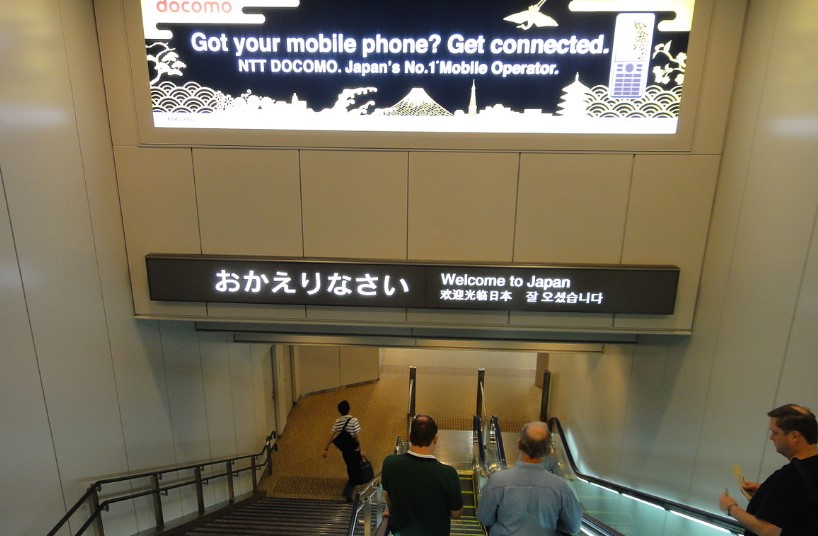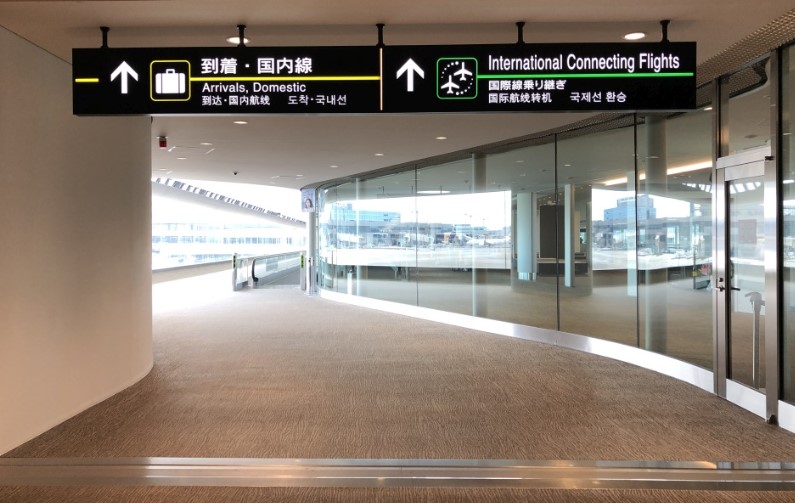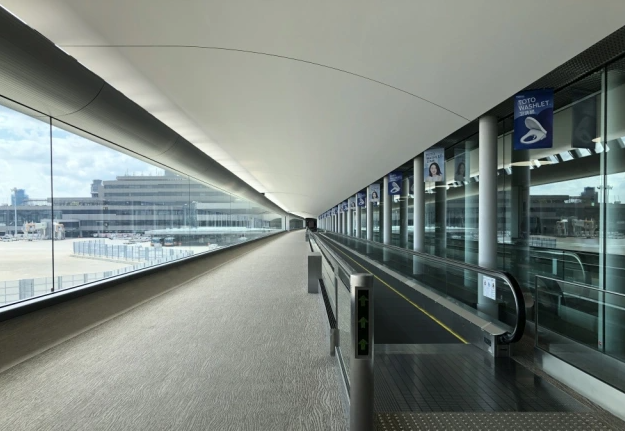A client of ours who had just been back from London after spending time with family for the first time since the beginning of the unpleasantness of the past few years, remarked at annoying Heathrow Airport was to navigate as a passenger. It has been a while since I have been to Heathrow Airport but it seems to me that Heathrow Airport, probably since the very first day of operation, has always been in a perpetual state of being built and rebuilt as the demand for traffic passing through it only ever grows more and more furious.
My memory of Heathrow Airport is one of everything always being temporary with bare metal and carpets thrown over the top; but worst of all, a wayfinding system that would even leave the Minotaur confused. Its saving grace is the abundance of little yellow signage, which in spite of the place being a swirling mass of confusion makes it a place with a unified design language. Heathrow is proof that there are infinities which are bigger than other infinities. No, I contradict myself. It contains multitudes. Amelia Earhart didn't go missing. She landed at Heathrow and then got lost trying to find the Arrivals Counters.
One of the downsides to living in Australia is that we are thousands of miles away from other places in Australia. A second of the downsides to living in Australia is that we are tens of thousands of miles away from other places in the world. The British Empire used this to their advantage after they had leaned from their experience in America. Having a group of subjects who were very sad with the way things were being run and who were still reasonably close, was a recipe for badness. So when it cam time to ship off the ne'er-do-wells, miscreants, hooligans, and other assorted scum that they couldn't leave in hulks any more, sending them to Australia was a brilliant option because Australia was so far away that once people were sent out here, hardly ever went back.
This arrangement was fine until the world invented trains, the telegraph, the telephone, television, and aeroplanes. Suddenly you had people who could move around the world and wanted to do so so. However, the world was still a massively massive place and Australia even with the advantage of aeroplanes is still thousands of miles away from other places in Australia and tens of thousands of miles away from other places in the world. Even with air travel, it still takes tens of hours to get anywhere.
When you put people in an environment where they can't move very far for tens of hours, they get cranky and unhappy far more easily. You can pacify them a bit with delicious dinners and alcohol (if the airline cares that much), but eventually the aeroplane has to vomit it passengers somewhere. Airport terminals are usually filled with restaurants, cafes, various kinds of shops, maybe bars and pubs but all of these things still can not eliminate the burden on passengers of travelling with other cranky passengers, hollering babies, systems that from the outside seem arcane and confusing, and the inevitable enemy of delays.
Nice cafes, restaurants, shops, bars, pubs, televisions et cetera are all nice things to have in an airport. However all of these things are secondary to good airport design. Truly brilliant airport design goes right to the heart of how the airport is built and configured; and that is something which I think that there is only one airport in the world which excels above all others.
Narita Airport which is one of the two big airports for Tokyo (the other being Haneda) has level separated Arrivals and Departures routes for passenger flow.
Imagine that you are a passenger. You have never arrived at this airport before and maybe you have never been in an airport before (except the one that you just left from). When you disembark from the aeroplane that you have arrived at, the aerobridge forces you to go to the lower level of the airport terminal.
From here, Narita Airport goes to the effort of closing off glass doors; so that the ONLY way that you can go as an arriving passenger, is straight to the Arrivals Counters. You literally have zero choices to make once you leave the aeroplane. You just keep on walking down the only corridor available to you, until you arrive at the Arrivals Counters and customs inwards.
It is literally impossible to get lost as an arriving passenger at Narita Airport because by scheduling planes to arrive at gates that are not next to each other, and then closing off doors and glass walls so that you can only go in one direction, even if you’re hungover with alcomohol, sleepy-bye-bye-pills, or sleep deprivation because of that screaming kid who didn’t let you sleep for 18 hours, you can not go anywhere else.
Likewise, when you arrive at Narita Airport to leave on a plane, you arrive at the upper level of the airport and provided you can match your boarding pass to the correct gate number, you can find your plane. Once you have passed through inwards security, while you do have a bit of freedom to visit the nice cafes, restaurants, shops, bars, pubs, televisions et cetera, the only way out is via an aeroplane.
If you want to change planes, then you can avoid passing through the Arrivals Counters and Customs, and you are directed to a set of escalators which then lead you back to Departure Lounges on the upper level.
If you are designing an airport, you have to assume that the passengers are either illiterate, or in a fugue-like zombified state because spending 18 hours on a plane will leave even the cleverest dons at Oxford, miserable shriveled wrecks of people. That screaming kid who didn’t let you sleep for 18 hours, is arguably the smartest person in the building because their response to it all, while being loud and generally annoying, is arguably the most emotionally intelligent.
Any other feature that an airport might have, however nice and ambiently pretty it is, is just a mere luxury or convenience. Unless the volume of traffic through the airport is so small that you can't have two streams of passenger flows at the same time, then level separated Arrivals and Departures routes and closed doors, is a borderline necessity.




No comments:
Post a Comment